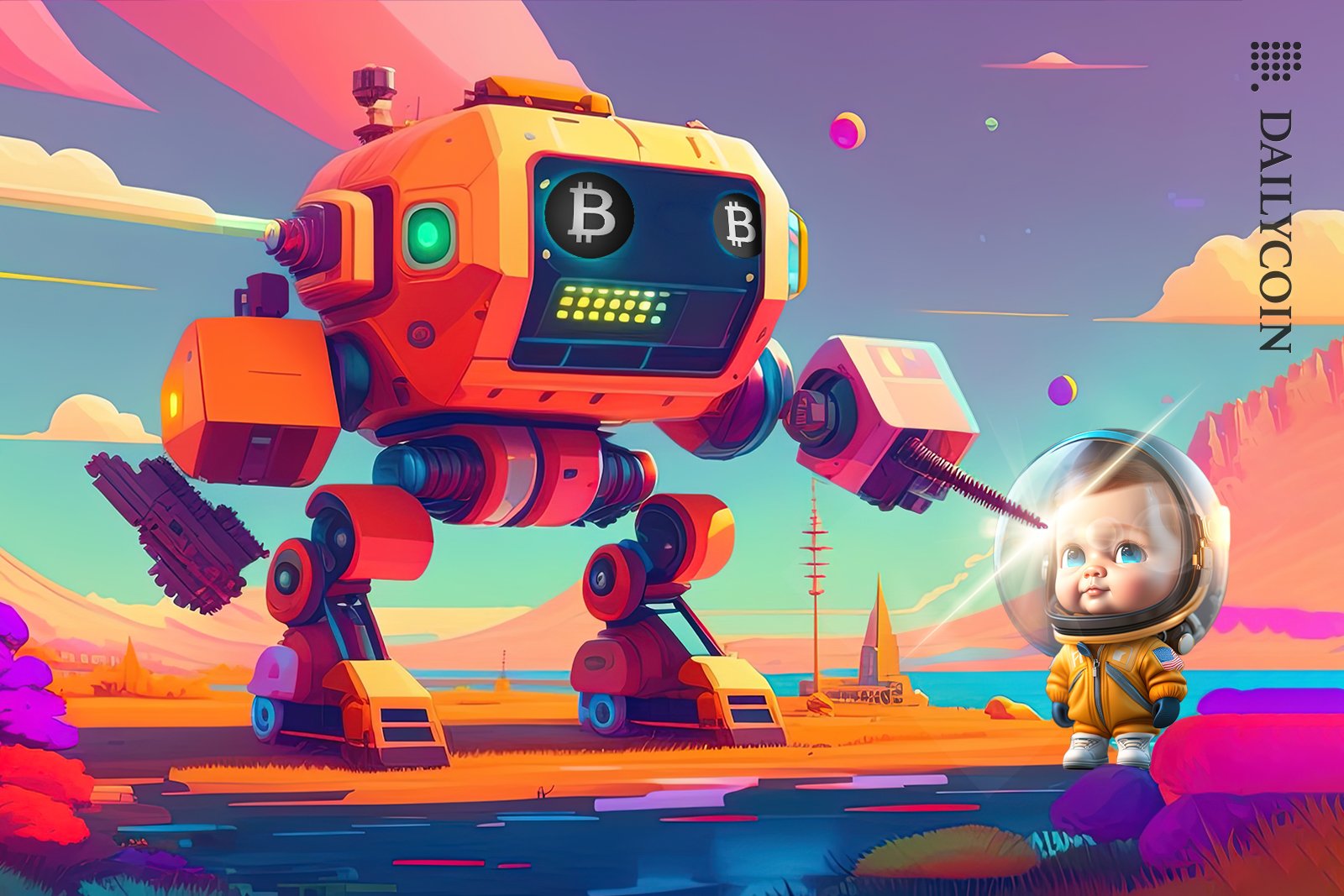
- As Bitcoin Ordinals are gaining traction, developers created the BRC-721E standard.
- Ethereum’s NFT dominance may come into question.
- Owners of individual high-profile NFTs already migrated to Bitcoin.
As Bitcoin Ordinals gain traction, a new development puts Ethereum’s NFT market squarely in its sights. A new protocol allows users to transfer Ethereum NFTs to Bitcoin’s Network.
On Monday, May 29, the Ordinals market and the Bitcoin Miladys NFT project jointly launched the BRC-721E standard. The technology enables the conversion of ERC-721 NFTs to Bitcoin Ordinals.
A Potential Shift in NFT Dominance
The advent of Bitcoin Ordinals and the BRC-721E standard could signal a seismic shift in the NFT landscape. So far, Ethereum has been the go-to platform for NFTs, but if high-profile NFT collections move to Bitcoin, Ethereum’s dominance could be in jeopardy.
Sponsored
For instance, in February 2023, one Bored Ape (BAYC) owner burned his Ethereum-based Ape to transfer it to Bitcoin’s network. Specifically, the BAYC owner called Bitcoin “the world’s scarcest and most secure chain” and said it brought true scarcity to NFTs.
If more Ethereum NFT owners move to Bitcoin, this will make Bitcoin a more attractive platform for creating new NFTs, threatening Ethereum’s position in the market.
What Is BRC-721E?
The BRC-721E standard is a protocol for creating non-fungible tokens (NFTs), known as Ordinals, on the Bitcoin blockchain. The protocol allows users to convert their Ethereum-based ERC-721 NFTs into Bitcoin Ordinals.
Sponsored
The process involves sending ERC-721 NFTs to a burn address, which remains inaccessible. The users must then pay the gas fees to inscribe the NFT onto the Bitcoin blockchain.

Initially, the BRC-721E standard doesn’t store metadata directly on the Bitcoin blockchain. Instead, users can store a lower-resolution preview image on-chain and include a reference to the original Ethereum NFT.
This approach represents a potential game-changer for the NFT space, enabling assets to transition between Ethereum and Bitcoin while maintaining their unique properties and provenance.
On the Flipside
- While the BRC-721E standard is an exciting development for Bitcoin, it is still in its early stages. The long-term feasibility of extensive NFT operations on Bitcoin remains to be tested.
- Ordinals have already led to a major spike in fees on the Bitcoin Network. This fact highlights potentially insurmountable scalability issues for the Bitcoin blockchain.
Why This Matters
The BRC-721E standard signifies an exciting development for Bitcoin’s NFT landscape. However, it also raises serious concerns about the scalability of the network.
Read about the BAYC holder moving his Ape to Bitcoin’s blockchain:
Bored Ape (BAYC) Holder Tries Out Bitcoin NFTs, Burns BAYC 1626 in the Process
Read more about Bitcoin ordinals:
